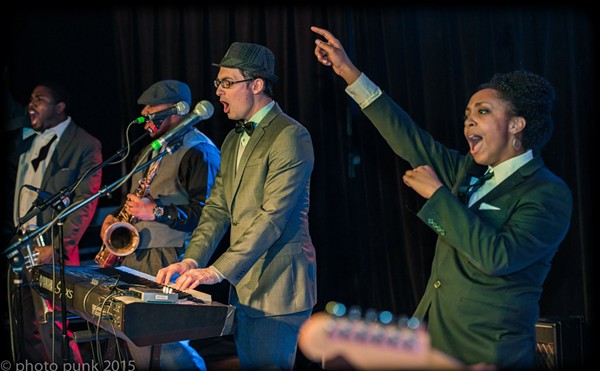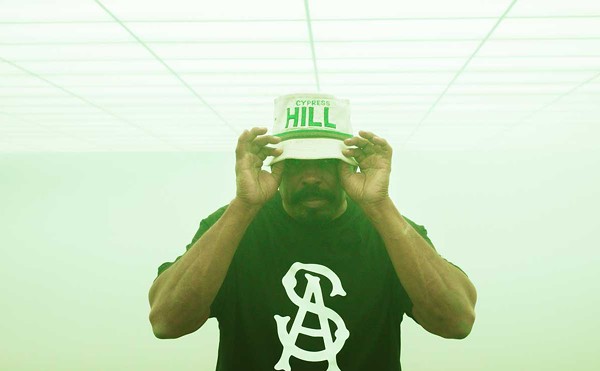“Stan Kenton can stand in front of a thousand fiddles and brass and make a dramatic gesture and every studio arranger can nod his head and say, ‘Oh, yes, that’s done like this,’” Andre Previn once observed. “But Duke merely lifts his finger, three horns make a sound, and I don’t know what it is!”
Well, who knows how Lawrence “Butch” Morris does what he does? For all the mysteries of Duke Ellington’s finger lifts, the crown for inventive band directions arguably goes to Morris. Kenton, Ellington, everyone on the main stem of band leading, directed musicians through scores, either detailed or skeletal; or they took musicians through predetermined forms like an x-bar blues in F.
Morris trots about the globe directing scoreless ensembles as they improvise from scratch, not a note on paper, no melody sung for them in advance. Good bandleaders are always said to play the ensemble as if it were an instrument; Morris is the rare cat who freely improvises on the ensemble as an instrument. And while his detractors will say this isn’t entirely original with him, Morris has clearly taken the notion further than anyone else, leading more than 100 of these “conductions” between 1995 and early 1999 alone. Some 20 or so of these have been documented on record — including 15 on the 10-CD collection Testament (New Worlds Records). The 1996 meetings of Morris, a couple ringers experienced in his methods and the ORT-Orchestra della Toscana add two CDs worth of vital music to the Morris library.
Conductions can sound as different as the mix of musicians involved. They can echo free bop or classical Turkish music — or the European orchestral tradition as they do with this Italian ensemble, which was once led by Luciano Berio. But then there are the ringers that Morris brings along — throwing in live and pre-recorded samples, drum machines, turntables and electronics, reminding the listener that this is global village music after all.
The music unfolds mysteriously, ominously at times, often in swirling layers; it builds and churns, calls and responds; it heats, cools and simmers anew. If there’s a weakness, it’s at finding closure in the three ensemble encounters presented here. In the end, it’s as if Morris has painted himself into a corner. And if he merely paints a window and jumps through — deep down we knew the show couldn’t go on forever.
W. Kim Heron is the editor of Metro Times. Send comments to [email protected].





